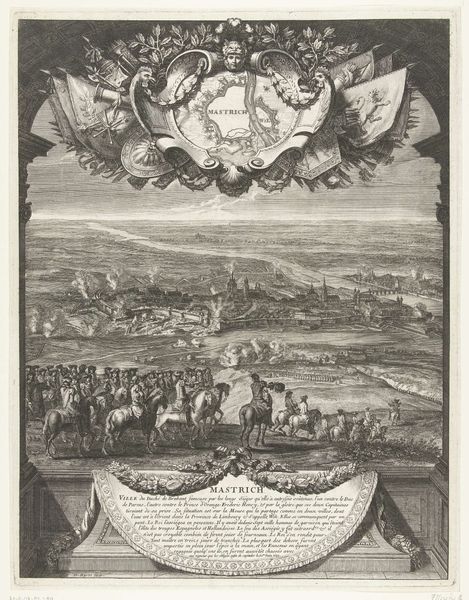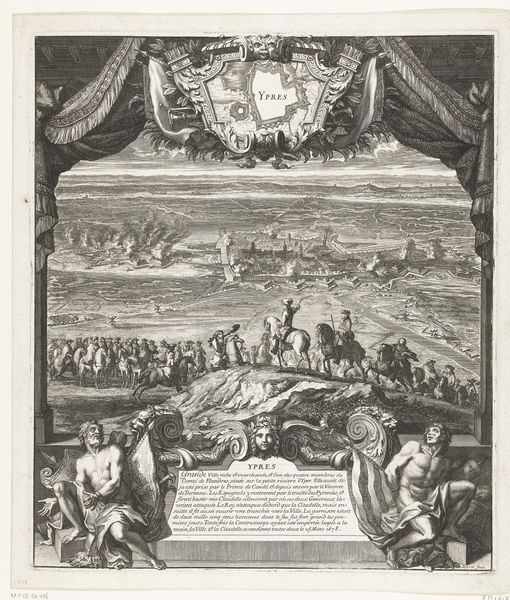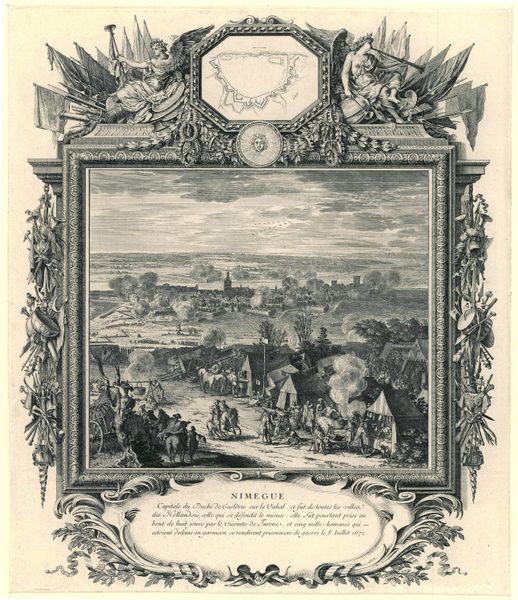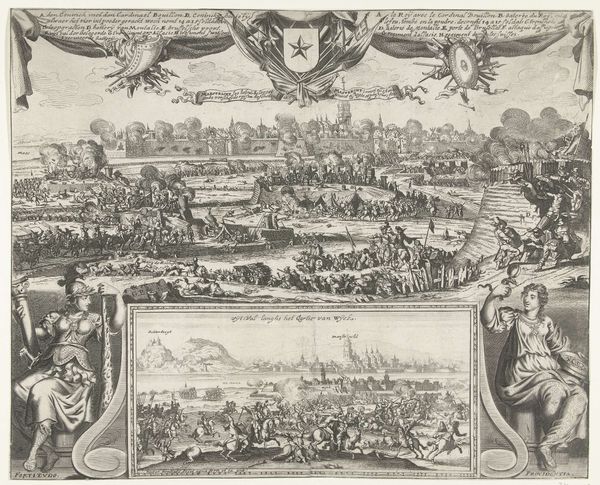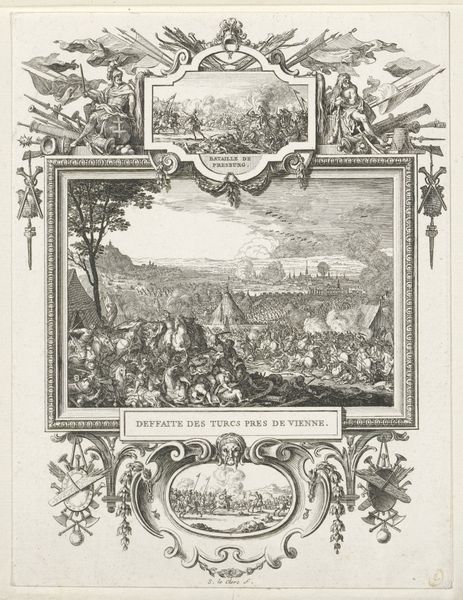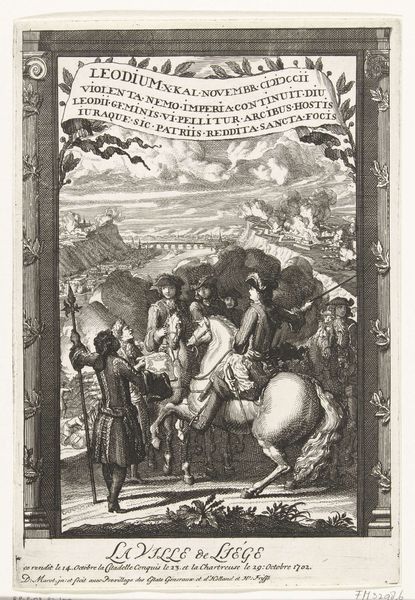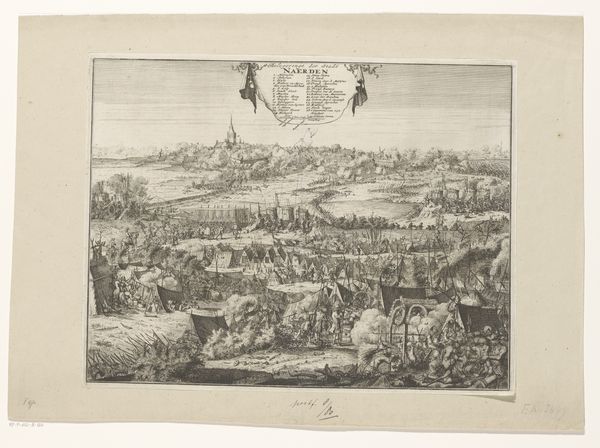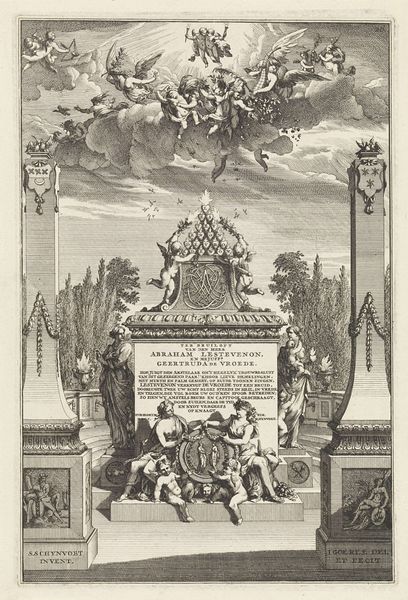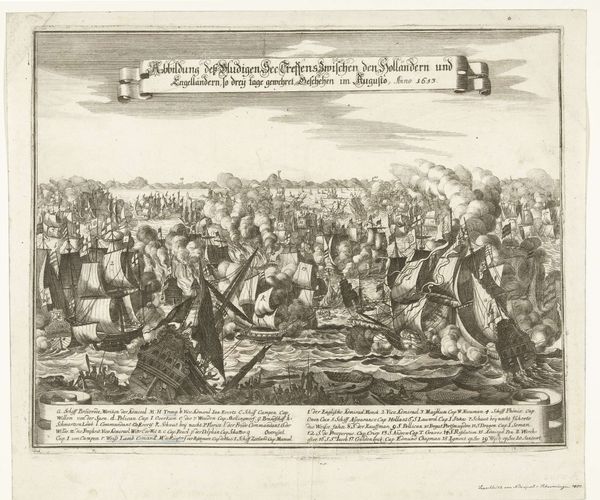
engraving
#
baroque
#
pen drawing
#
old engraving style
#
cityscape
#
history-painting
#
engraving
Dimensions: height 425 mm, width 365 mm
Copyright: Rijks Museum: Open Domain
Richard Collin's etching captures the French troops' capture of Dole in 1674. The most potent symbols here are the military regalia—flags, weapons, and armor. These are not merely tools of war, but emblems of power, status, and the martial spirit. Notice how Collin frames the central scene, a cartographic rendering of the city of Dole in the upper register. This act of mapping is itself symbolic, a visual claiming of territory, linking directly to the Roman practice of "limitatio," establishing boundaries and order in newly conquered lands. We can trace this visual language through centuries, from Roman triumphal arches to Renaissance battle scenes. This symbol resurfaces and takes on new meanings in different historical contexts, reflecting a perpetual human impulse to assert dominance and memorialize conquest. The psychological impact is undeniable. The precise and orderly arrangement of soldiers can evoke feelings of security but also, perhaps, unease at the display of overwhelming force.
Comments
No comments
Be the first to comment and join the conversation on the ultimate creative platform.
